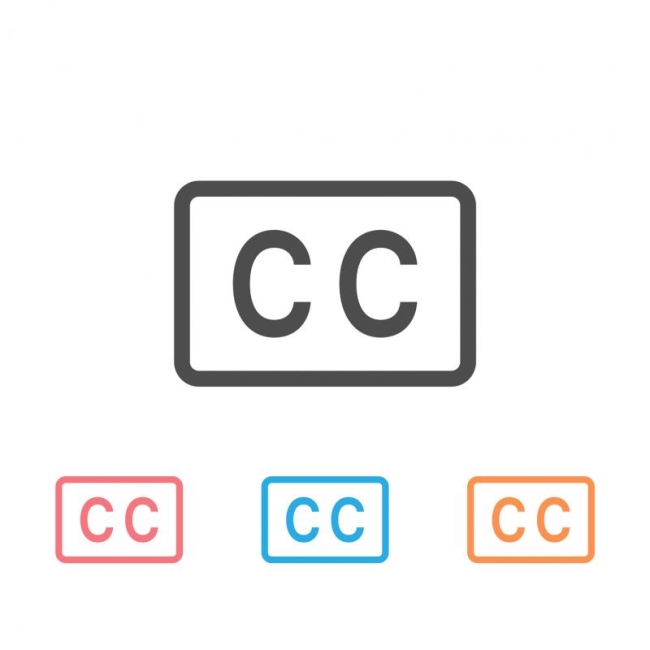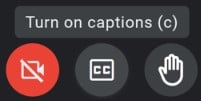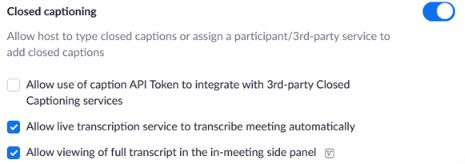You have /5 articles left.
Sign up for a free account or log in.

~Userba9fe9ab_931/istock/getty images plus
For us folks with one of the great invisible disabilities, hearing loss, captions are a godsend. Their significance becomes dramatically evident in their absence, as occurs when one of us, David, has told family members that he’s hearing a movie just fine so they can turn off the captions -- whereupon he suddenly cannot hear. Seeing the words makes hearing the words easy. That’s what we psychologists call perceptual set; we can more easily perceive what we’re primed to expect.
For accessibility reasons alone, today’s online classes and Zoom meetings should routinely offer a captioning option. Captions are to people with hearing loss what ramps and elevators are to those with mobility issues. As our distinguished psychologist colleague Martin E. P. Seligman reports, “This COVID year was better for me than a normal year because I had life with closed captions. I was ‘present’ for 80 percent of conversations rather than the 25 percent that my progressing deafness has brought about.”
But captioning has additional benefits. As one of us, Morton Ann, has documented, more than 100 research studies demonstrate that “video captions benefit everyone.”
It’s no surprise that captions boost speech comprehension for those with hearing loss. And it’s understandable that, for example, Japanese students who don’t know English learn the language far better when viewing English language videos with English captions -- rather than with no captions or with Japanese captions.
But the news gets even better.
- Captions help hearing children learn to read. Captions enable children to map sound and meaning onto text -- which is, after all, the goal of reading.
- Captions enhance comprehension for those viewing in their second language. For instance, captioning enables English-speaking teachers to better support their immigrant and international students for whom English is not a primary language.
- Captions also boost attention and memory. When TV commercials are captioned, TV viewers better remember the names of the products being advertised. What ad agency wouldn’t want that? And when course lectures are captioned, students better remember the lectures’ content. What teacher -- and student -- wouldn’t want that?
Many hearing people have come to appreciate the benefits of captioning for all. In Great Britain, most captioning users have no hearing loss. They simply appreciate how captions enhance their listening to speech that is quickly spoken, accented, mumbled or masked by background noise. They welcome the spelling of names and of novel scientific or technological words. They like being able to hear at a lower volume. And they appreciate hearing better amid extraneous noise in their home or in sound-attenuated environments such as offices and libraries.
But for captions to be effective, they must be seen. And to be seen, they must be turned on. So, instructors, turn on those video captions. And if you are hosting online meetings, do likewise and explain the option to your attendees.
The state of Washington gets it. This past May, Governor Jay Inslee signed into law the Turn On the TV Captions bill, which had passed both its House and Senate with unanimous bipartisan support. With this bill, Washington joins at least a half dozen cities in mandating TV captioning in bars, restaurants, waiting areas and other public places: “Any person that owns or manages a place of public accommodation that offers a closed-captioned television receiver for use in any public area must activate closed captioning” with easily readable white-on-black text.
In classes, instructors can do the same -- by always activating video captions.
For Google Meet users, the captioning option is -- voilà! -- already right there on the task bar.
 Zoom class and meeting hosts can activate the captioning option in their Profile settings or via the accessibility feature in their meeting settings.
Zoom class and meeting hosts can activate the captioning option in their Profile settings or via the accessibility feature in their meeting settings.

If the host clicks on “Live Transcript” and enables it, individual students or meeting attendees will thereafter have a closed captioning option on their Zoom task bar. They can even select a different font and drag the caption bar anywhere on screen. And if they wish to review or quote something said earlier, they can view a transcript of the entire session.
 Live Transcript also enables someone to capture, for later review, a record of the entire meeting or class. Should that ever seem problematic (albeit mindful that any attendee with a phone can record a session), the host could disable the Live Transcript option.
Live Transcript also enables someone to capture, for later review, a record of the entire meeting or class. Should that ever seem problematic (albeit mindful that any attendee with a phone can record a session), the host could disable the Live Transcript option.
The bottom line: for those of us with hearing loss -- and for everyone else as well -- the new world of automated voice translation and built-in captioning is a great blessing. Use it!




